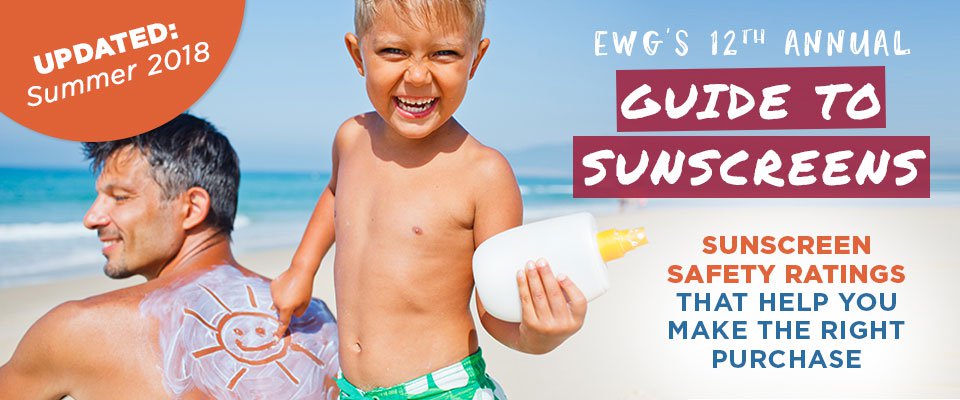How to Find a Safer Sunscreen
The below article was originally written in 2012, but the facts about sunscreen remain accurate. For the most up-to-date details about safer sunscreen, read the EWG’s Sunscreen 101, or get the current list of EWG’s Best Scoring Sunscreens for Kids.
The Environmental Working Group (EWG.org) is an organization that has made great strides towards improving our environmental health. EWG has made public many shocking truths about the chemicals in our everyday environment. Most recently, they published their reviews of over 800 sunscreens on the market. We wanted to republish some excerpts that we felt were most relevant to our customers. Hopefully this guide will assist you in finding the right sunscreen to lather on your children this summer. Below are some excerpts. Read the full report.
EWG’s research into this year’s crop of sunscreens revealed that many products advertised for babies and kids are formulated with safer, more effective ingredients than those in other products. Still — buyer beware! There are still many children’s products that don’t meet the mark. Here are a few shameful trends and products in the 2012 sunscreen crop:
Hormone-disrupting chemical in children’s sunscreens
Some 65 sunscreens advertised for babies and kids contain oxybenzone, a synthetic chemical that absorbs the sun’s rays but also readily penetrates the skin. It can disrupt the body’s natural hormones. It can also cause allergic reactions. Experts warn that children are at greater risk from oxybenzone and other hormone-disrupting substances than adults. They absorb more of the chemical relative to their weight. They may not excrete it as easily. And their developing bodies are particularly sensitive to hormonal changes.
Typical offenders:
- Banana Boat Kids Quik Blok Sunblock Spray Lotion, SPF 35 – 4% oxybenzone
- Coppertone Water Babies Sunscreen Lotion, SPF 70+ – 6% oxybenzone
Sunscreens that boost skin tumor risk?
Foods rich in vitamin A are good for the body. But applied to sun-exposed skin, this common sunscreen additive may speed the development of skin tumors and lesions, according to government studies. Why is vitamin A (shown as “retinyl palmitate” or “retinol palmitate” on labels) allowed in sunscreens made for use in the sun? Good question.
Almost 40 sunscreens advertised for babies and kids contain retinyl palmitate, including:
- Banana Boat Baby Tear Free Sunblock Lotion, SPF 50+
- Arbonne Baby Care Sunscreen Lotion, SPF 30
- Australian Gold Baby Formula Lotion Sunscreen, SPF 50+
The FDA has yet to rule on the safety of retinyl palmitate in skin care products, but EWG recommends that consumers avoid sunscreens with this chemical.
Sprays that could coat the lungs
Aerosol spray sunscreen packages will soon be required to display FDA-mandated warnings such as “use in a well ventilated area” and “intentional misuse… can be harmful or fatal.” These cautions highlight growing concerns that sprays pose serious inhalation risks. Spray sunscreens also make it too easy to miss a spot, leaving bare skin exposed to harmful rays.
Children’s products… sometimes better, but not always
For some brands, the only differences are on the label – not inside the bottle. We found that 16 brands in this year’s crop feature products that list the same ingredients for both baby and adult sunscreens – down to the exact amounts of active ingredients. Among them:
- Aveeno Baby Natural Protection Mineral Block Sunscreen Lotion, SPF 30
- Aveeno Active Naturals Natural Protection Mineral Block Sunscreen Lotion, SPF 30
- Coppertone Kids Sunscreen Stick, SPF 55
- Coppertone Sport Sunscreen Stick, SPF 55


